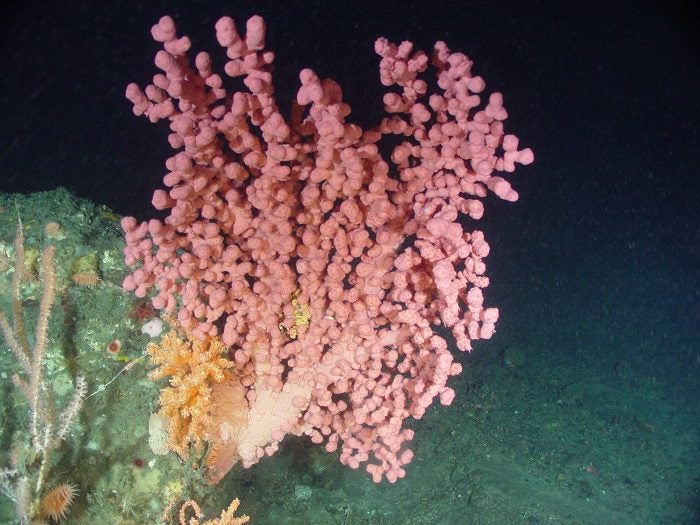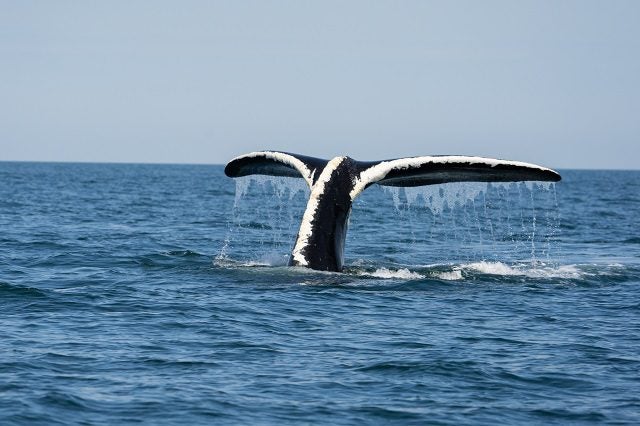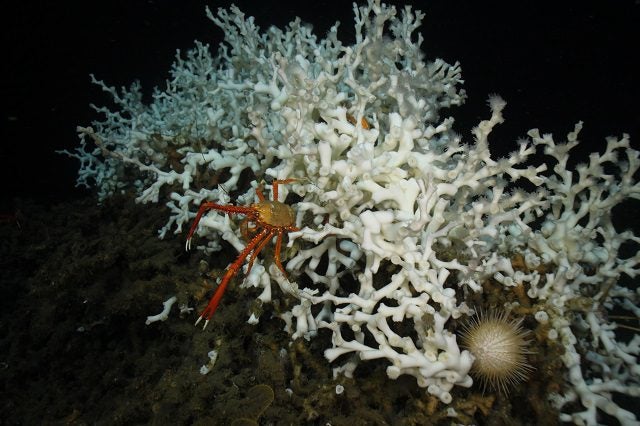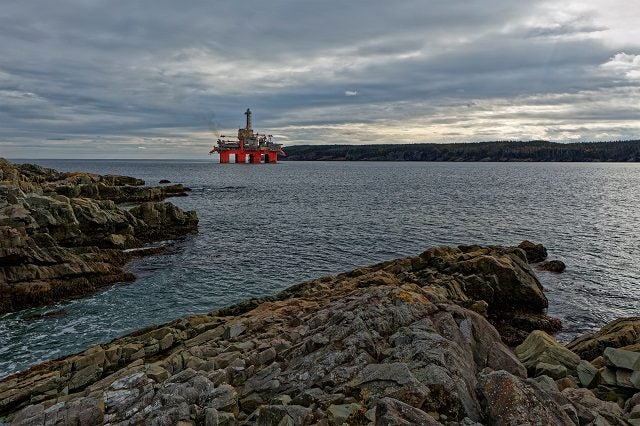June 16, 2023
The Deep Dark Submarine Canyons of Northwest Atlantic Canada
Estimated reading time: 0 minutes
BY: Leah Rudderham
Topics: Protect Marine Habitat
One of the most recognizable natural wonders of the world is the Grand Canyon but did you know there is a canyon double its depth hidden below the waves off eastern Canada? Submarine canyons are extremely deep, complex valleys that were eroded into continental shelves millions of years ago. These unique and enduring features exchange waters from the surface with the deep sea, as ocean currents push cold, nutrient-rich waters up through the canyon. The steeped valley walls and nutrient-dense waters create ideal conditions for deep-water corals to flourish, a biodiversity hotspot where marine life abounds.

Just like the underwater mountains in the Northeast Pacific that Oceana Canada visited and worked to protect, submarine canyons are oases of life in oftentimes barren deep-water environments. Submarine canyons can be found in all three of Canada’s oceans. The northwest Atlantic waters around Canada boast at least 13 unique canyons. One of these canyons is called The Gully and it is the largest submarine canyon in the northwest Atlantic!
The Gully
The Gully is over 65km long, 15km wide and more than 3,000 metres deep, nearly twice as deep as the Grand Canyon. The walls of the Gully canyon are covered with deep-water corals, sea pens, brittle stars and anemones. These species are all habitat forming, meaning they provide spots for animals like fish to find shelter, feed and nurse their young. The Gully is home to some incredible species including porbeagle sharks, tunas, swordfish, sunfish, halibut, skates, cusk and lanternfish. Over 15 species of whales also live here including northern bottlenose whales and critically endangered North Atlantic right whales.

The Gully has been fully protected from fishing and oil and gas activity as an Oceans Act Marine Protected Area (MPA) since 2004. On World Oceans Day 2022, the government of Canada created the Eastern Canyons marine refuge, located east of The Gully MPA, providing protection for rare species of corals such as the spider coral (Lophelia), the only population of reef-forming coral in Nova Scotia waters. While this is a big step for protecting submarine canyon features and the species they support, better and more effective protection is needed. The Gully is the only submarine canyon in Canada that is strongly protected. There are still many submarine canyons in Canadian waters that have no permanent protection, or, like the Eastern Canyons, restrict only bottom-contact fishing while allowing for activities that pose other threats.

Big Threats to the Ocean Floor
Overfishing and destructive fishing practices combined with pollution and climate change threaten sea canyons. Fishing with gear that connects with the bottom of the ocean, such as trawls, dredges and traps, can easily break and kill corals that have taken centuries to grow. Longline gear can span over 80km long and are equipped with thousands of baited hooks that can entangle around corals and sponges as well as catch species not targeted by the fishery including turtles, dolphins and sharks. Many deep-water fishes found within the depths of canyons grow and mature slowly, meaning they are more sensitive to habitat disturbance and fishing. Pollution is also a very real threat for the canyons of Atlantic Canada, from the risk of oil and gas exploration and extraction, disturbances from deep sea mining and the risks of dumping.

The Offshore Petroleum Boards in Atlantic Canada annually opens the bidding processes on licences to explore and develop offshore oil and gas resources. Unfortunately, the areas open for bidding often overlap with critically important ocean habitat, including the Gully and other submarine canyons.
Oceana Canada responded to a 2022 Call For Bids in Nova Scotia with significant concern that exploration and development of petroleum resources in the Gully and the Eastern Canyons will put fish populations, marine mammals and sensitive benthic (seafloor) fauna like corals and sponges at significant risk of long-term damage.
Submarine Canyons Need Protection
These threats pose very real risks to Canada’s marine ecosystems, but the support for protection of submarine canyons, including The Gully and the Eastern Canyons, is growing. Oceana Canada is joining many others in working to learn more about these critical habitats and ensure they continue to thrive and support healthy, abundant oceans.
Join Oceana Canada to Protect Marine Habitats in Canadian Waters. As a Wavemaker, you’ll join our passionate community of ocean advocates, get the latest updates and be at the forefront of efforts to protect the ocean.

